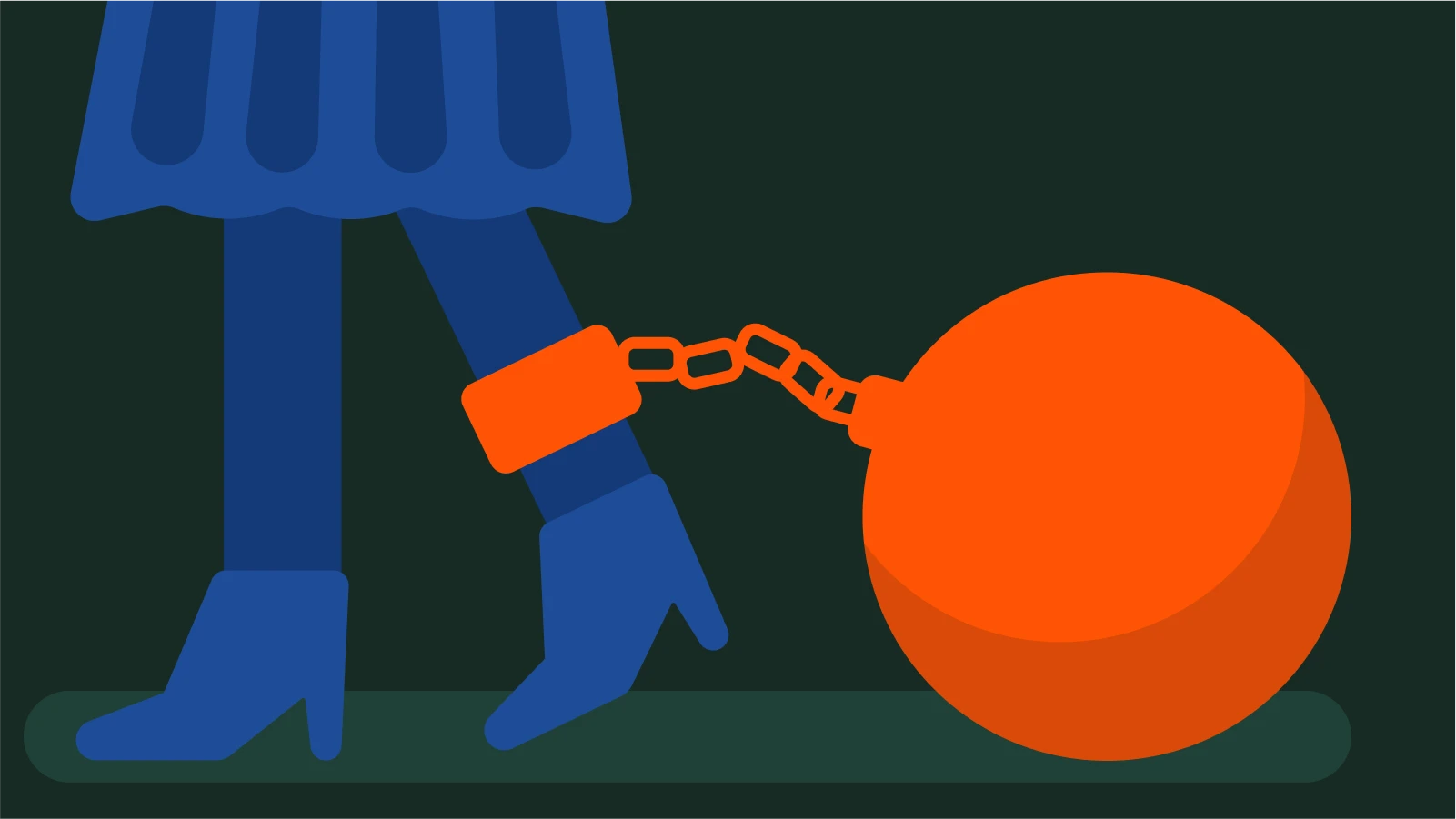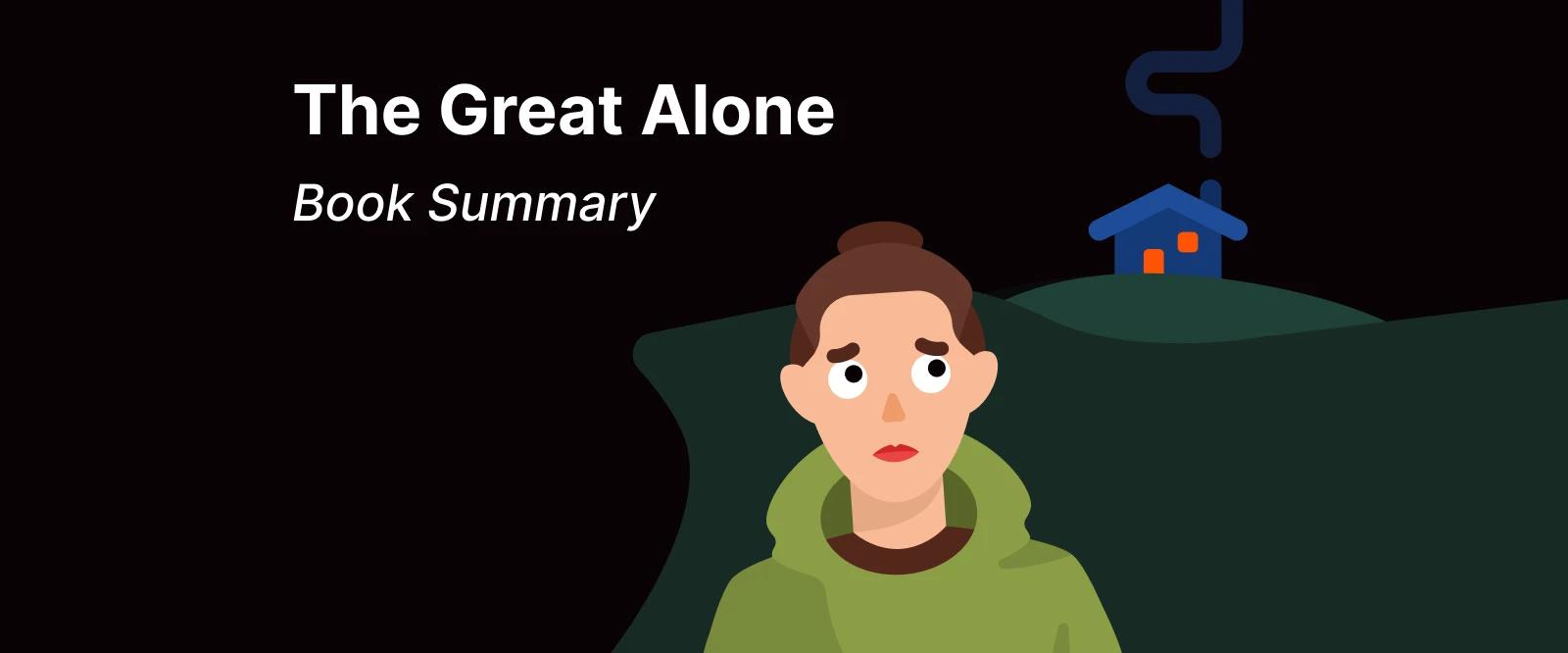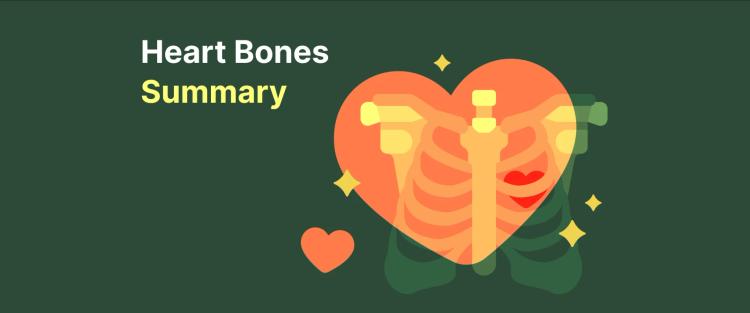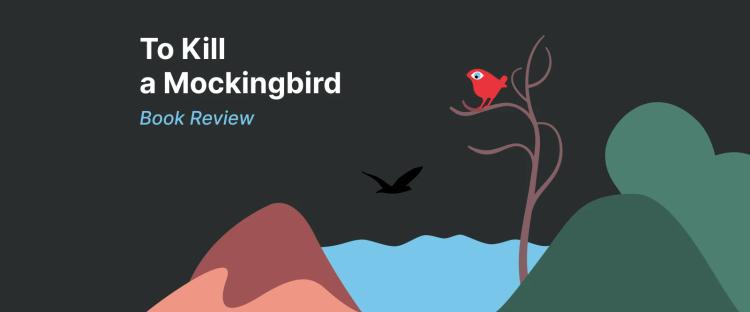Looking for a summary of 'The Great Alone?' You're in the right place, as we'll break down Kristin Hannah's gripping survival tale here, so you don't have to read the entire book.
'The Great Alone': Short summary in one paragraph
Set in brutal yet breathtaking Alaska in the 1970s, 'The Great Alone' is a coming-of-age story that follows the Allbright family as they seek a fresh start in the wild frontier. With the husband struggling with PTSD from the Vietnam War, the family's dream of a peaceful life quickly crumbles into a harrowing struggle for survival.
As Leni comes of age amid isolation, domestic abuse, and the unforgiving wilderness, she discovers what resilience, love, and community really mean. This summary captures the heart of their journey, filled with challenges and profound lessons.
Key plot point in 'The Great Alone'
Before diving deep into 'The Great Alone,' it's helpful to trace the emotional and narrative journey that shapes the story. These key plot points highlight the transformation of Leni and her family through survival, heartbreak, love, and ultimately, healing. The following section contains spoilers:
Arrival in Alaska: The Allbright family arrives in the remote town of Kaneq, Alaska, full of hope for a fresh beginning. Ernt, a Vietnam veteran haunted by his experiences, believes the untamed wilderness will offer solace and purpose. Meanwhile, while Cora and Leni, her thirteen-year-old, hope he will find peace and stability.
Alaska's stark beauty immediately captivates young Leni, but the family soon faces the harsh reality of a land they're utterly unprepared for.Settling in: With winter looming, the family starts adapting to their new life in their small cabin by chopping wood, storing food, and learning survival basics from the locals. The community, especially the tough Large Marge, steps up to help.
But despite being welcomed, Ernt's growing distrust and resistance to outside help start to isolate the family from vital connections. His friendship with one of the locals, Mad Earl, only fuels his negative emotions.Ernt's decline: As winter approaches and nights grow longer, Ernt's mental state deteriorates. His PTSD resurfaces violently, with fits of paranoia, alcohol abuse, and domestic violence toward his wife Cora. That dream of an Alaskan sanctuary collapses into a terrifying prison, where fear replaces freedom and silence conceals unspeakable suffering. Much like the protagonist in 'Maid,' who faces the brutal realities of escaping abuse while trying to survive, the Allbrights must navigate their own nightmare, where safety and hope feel increasingly out of reach.
Leni and Matthew: Amid the chaos, Leni finds solace and strength in her friendship with Matthew Walker, the son of a local leadership figure. As they grow into their teenage years, their connection deepens into a secret romance. This relationship becomes a lifeline for her, offering warmth and stability in contrast to her turbulent home life.
Escalating abuse: Ernt's grip intensifies, with physical and emotional abuse reaching dangerous levels. The family becomes increasingly isolated, with Ernt starting to build a wall around their land.
To make things worse, a tragic accident separates Leni and Matthew, leaving them broken and vulnerable.

Turning point: When Ernt's brutality peaks and he nearly kills Cora, she shoots him in self-defense, an act born of desperation and maternal instinct. Leni helps hide the truth, and together, they flee to Seattle, carrying the emotional weight of a tragic moment, as well as leaving behind their loved ones.
New beginnings: Years pass. Leni becomes a mother, attends college, and tries to forge a solid future for herself and for her child. Her life is shattered once again as she loses Cora to cancer. She now longs for closure, and there is only one place that can offer it to her.
Closure and healing: Back in Kaneq, Leni confronts the ghosts of her past. She reunites with Matthew, who has begun to heal from his own trauma.
Together, they build a life rooted in the land that once nearly destroyed them. With the land that once symbolized pain now offering peace, Leni learns that healing means also transforming scars into strength.
Characters to remember
The emotional core of 'The Great Alone' rests on its cast. Each character shapes the novel's raw, gripping journey, whether through courage, cruelty, or compassion:
Leni Allbright: As the heart of the novel, Leni is a perceptive, introspective, 13-year-old teenager who's thrust into Alaska's wild terrain alongside her family's unstable dynamics. The young girl’s loyalty to her mother and love for Matthew define her emotional core. Throughout her journey, she transforms trauma into strength.
Leni's journey of self-discovery and resilience mirrors Tara Westover's in 'Educated,' where a young woman finds strength and identity in the face of overwhelming adversity.Cora Allbright: A deeply devoted mother, Cora is trapped in a cycle of abuse with her volatile husband, Ernt. Her love for him is rooted in nostalgia and hope, but it's her fierce protection of Leni that drives her ultimate acts of courage.
Cora's arc illustrates the complexity of abused women: loyal, broken, and ultimately brave.Ernt Allbright: Once a soldier and a former POW, now a man haunted by the ghosts of war, Ernt's descent into paranoia and violence shows the effects of untreated PTSD on Ernt and his family. His dream of a self-sufficient life in Alaska quickly morphs into a dangerous fantasy fueled by control and rage.
Despite occasional moments of lucidity and tenderness, his instability transforms their home into a prison. Ernt becomes the symbol of the destructive power of trauma.Matthew Walker: A bright and compassionate boy, Matthew offers Leni a rare source of comfort and understanding. His relationship with her unfolds slowly and tenderly, bringing moments of light into a very dark narrative. After suffering a life-altering injury, Matthew's resilience becomes a parallel to Leni's own growth. He represents hope, healing, and the quiet strength it takes to rebuild after tragedy.
Large Marge: A formidable woman, Large Marge is a former prosecutor who moved to Kaneq to escape the fast-paced world. She's the community's beating heart, wise and unyielding, and becomes one of the novel's moral anchors.
Marge is also an advocate for women, taking a protective stance toward Cora and Leni.Tom Walker: Matthew's father and one of the town's leadership figures, Tom is fair and courageous. He recognizes the danger Ernt poses and isn't afraid to stand up to him. Tom's generosity and strength build bridges in a fractured community, and his bond with his son mirrors the healthier form of masculinity missing from Ernt's character. He is the counterbalance to the chaos surrounding the Allbright family.
Themes raised by Kristin Hannah in 'The Great Alone'
At its core, 'The Great Alone' is more than a survival story. Through Alaska's unforgiving wilderness, Kristin Hannah confronts complex themes, weaving them into the main character's journey:
Survival against nature and within the home: Alaska is a land of freezing temperatures and wild terrain. Surviving it requires courage and adaptability. But the emotional survival within the Allbright household proves just as challenging, with Leni and Cora facing Ernt's unpredictable rage.
The outside scenery mirrors the family's life.The impact of trauma: Ernt's unhealed trauma from Vietnam is what sets the events in motion, acting as a destructive force in his relationships. His volatile behavior reflects how deeply psychological wounds can fracture families, in addition to the effects they have on the individual.
Through his character, Hannah explores the ripple effects of untreated PTSD, not just on veterans but on those who love them.
Similar to Viktor Frankl's experience in 'Man's Search for Meaning,' trauma can be overwhelming, but finding purpose in suffering is crucial for survival. Just as Frankl discovered meaning amid unimaginable pain, the Allbrights must navigate their own path to healing, despite the deep scars left by Ernt's trauma.

Mother-daughter bond: The unwavering connection between Cora and Leni is both tender and powerful. In a world dominated by male control and unpredictable danger, their relationship offers a sanctuary of trust, protection, and unconditional love. It's this fierce bond that drives many of the novel's most dramatic moments.
Isolation and mental health: The Alaskan wilderness is portrayed as both beautiful and cruel, symbolizing how isolation can lead to freedom or mental unraveling. Ernt becomes immersed in his dark thoughts.
At the same time, the solitude found in this new land offers Leni moments of clarity and self-reflection, suggesting that isolation can be both harmful and transformative depending on the individual.Love and loyalty: Hannah examines how love can manifest in both healing and harmful ways. Cora's devotion to Ernt despite his abuse becomes dangerous for herself and her daughter, while Leni's romance with Matthew is a solace. The novel poses tough questions about when love becomes sacrifice, and where the line between duty and self-preservation lies.
Community and connection: Although the Allbrights seek a solitary life, it's the community of Kaneq that proves vital to their survival and eventual healing. Characters like Large Marge and Tom Walker provide friendship and support, showing that even in remote areas, human connection is crucial.
What 'The Great Alone' teaches us about life and survival
More than just a distressing tale set in the Alaskan wilderness, 'The Great Alone' pulses with hard-earned wisdom. Kristin Hannah's narrative grips readers with its raw honesty, revealing deep truths about human nature, endurance, and the ties that bind us. These lessons go beyond fiction, offering insights that resonate with anyone navigating the wild terrain of life:
Resilience is learned: In Alaska, survival depends on strength and the ability to adapt and persevere. Leni doesn't start out strong; she becomes strong. Through loss, isolation, and trauma, she develops grit and endurance.
PTSD and the importance of seeking help: Ernt's untreated PTSD spirals into paranoia and violence, underscoring the critical need for mental health support, especially for veterans and trauma survivors. The novel shines a light on the consequences of silence and stigma around mental illness, advocating the life-saving power of intervention and compassion.
Love can be both a refuge and a trap: Cora's love for Ernt keeps her attached to a toxic cycle of abuse, showing how love can be blind. In contrast, Leni's love for Matthew becomes a source of empowerment and healing. Hannah masterfully shows how love can offer sanctuary, but also create captivity.
Nature is indifferent but instructive: Alaska doesn't care if the Allbrights are prepared; it demands respect and punishes the careless. Yet through its harsh conditions, nature teaches discipline, humility, and the beauty of living a simple life. Its silence often reflects inner truths, offering clarity when human connection feels out of reach.
Community matters: Though Alaska is remote, the people of Kaneq come together as a lifeline. Figures like Large Marge and Tom Walker show how support networks can mean the difference between survival and surrender.

Freedom requires courage: For Leni and Cora, freedom from Ernt isn't given. It must be claimed. It takes unimaginable bravery to break free from abuse and rebuild a life on your terms. The novel celebrates those who fight for autonomy, reminding readers that sometimes the greatest act of survival is choosing yourself.
This mirrors the journey in 'Know My Name,' where Chanel Miller finds the courage to reclaim her identity and voice after experiencing trauma. The novel celebrates those who fight for autonomy, reminding readers that sometimes the greatest act of survival is choosing yourself.
About the author: Kristin Hannah
Kristin Hannah is a bestselling American novelist whose emotionally powerful books have captivated millions. She launched her literary career after leaving behind her legal profession and rose to global acclaim with 'The Nightingale,' which sold over 4.5 million copies worldwide.
Published by St. Martin's Press, her novels, such as 'Firefly Lane', 'The Four Winds', and 'The Great Alone', continue to earn glowing reviews on Goodreads and spark vibrant discussions in best book clubs everywhere.
Her new book, 'The Women,' adds another compelling chapter to the legacy of Kristin Hannah's storytelling, further solidifying her place as a beloved voice in modern fiction.
Final thoughts on 'The Great Alone'
'The Great Alone' is more than a survival story — it's a meditation on the human spirit. Kristin Hannah crafts a narrative that is as emotionally raw as the Alaskan landscape.
And through Leni's journey, readers confront the realities of trauma, the complexities of love, and the enduring strength of women. It's a novel that lingers long after the final page, reminding us that even in the darkest winters, spring eventually comes.
If 'The Great Alone' made you think about life's deeper lessons, why not keep the momentum going? The Headway app offers bite-sized insights from bestselling books, including titles that explore themes of resilience, personal growth, and emotional intelligence. Whether you're short on time or hungry for more inspiration, the Headway app makes meaningful learning easy and engaging.
Frequently Asked Questions
Is ‘The Great Alone’ based on a true story?
No, 'The Great Alone' is fiction. However, Kristin Hannah drew inspiration from the experiences of Vietnam veterans and the challenges faced by homesteaders in Alaska.
The novel vividly portrays the emotional scars of war and the harshness of the Alaskan wilderness, providing a powerful, gripping narrative.
What genre is ‘The Great Alone?’
'The Great Alone' is historical fiction, with elements of family drama, romance, and psychological suspense. Set in the harsh Alaskan wilderness, it follows the Allbright family's survival against both nature and the emotional trauma that comes from PTSD, offering an unforgettable blend of personal struggle and emotional resilience.
Is there a movie adaptation?
Yes, 'The Great Alone' was adapted into a film by TriStar Pictures. The movie captures the raw emotions of Kristin Hannah's novel, depicting the Allbright family's journey through the violent struggles of survival, PTSD, and love amidst the unforgiving Alaskan wilderness, staying true to the novel's core themes.
What age group is the book suitable for?
'The Great Alone' is a great book for mature readers due to its heavy themes, including domestic abuse, PTSD, and the intense emotional and physical struggles of survival, which many first-time readers may find upsetting.
These themes are explored with depth and complexity, making it unsuitable for younger readers but perfect for those looking for a thought-provoking, emotional read.
What makes Alaska significant in the novel?
In 'The Great Alone,' Alaska is not just a setting but a character in its own right. The vast, unforgiving wilderness symbolizes both freedom and danger. Its isolation and beauty mirror the Allbright family's internal battles, while shaping their survival, ultimately becoming a transformative force in their healing journey.













